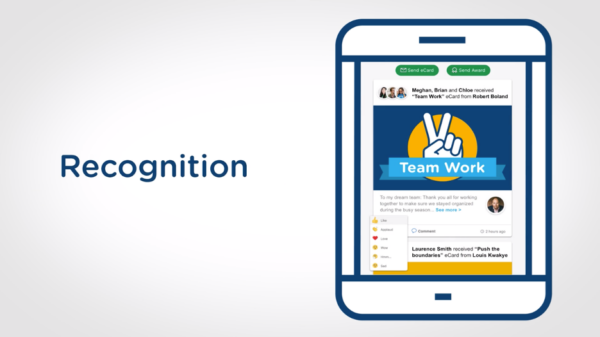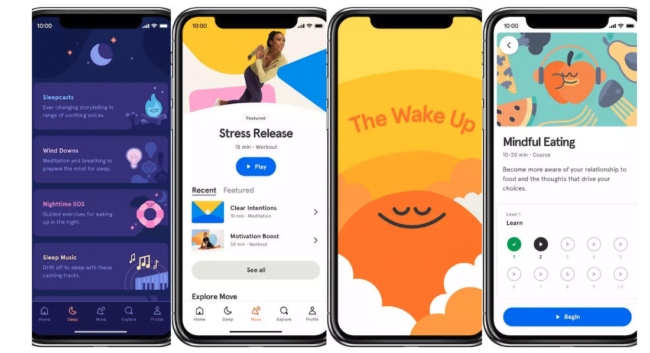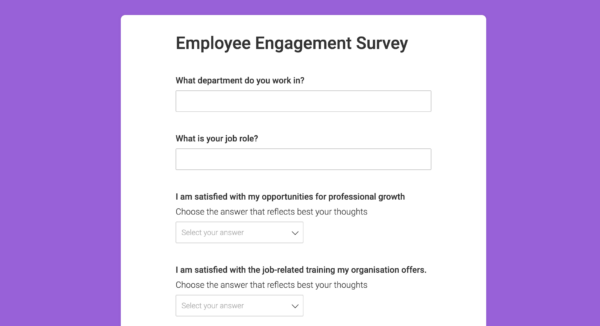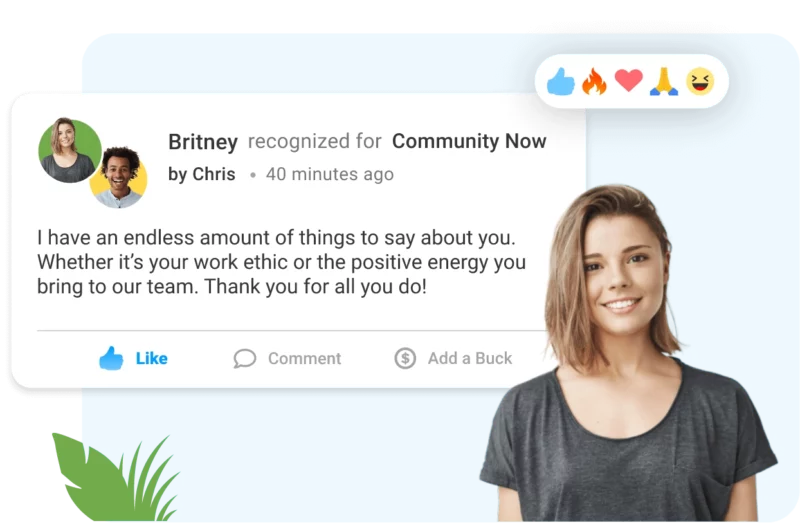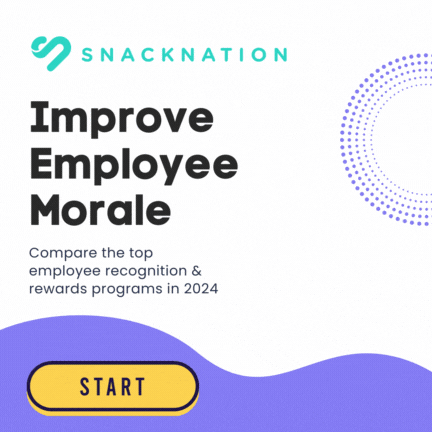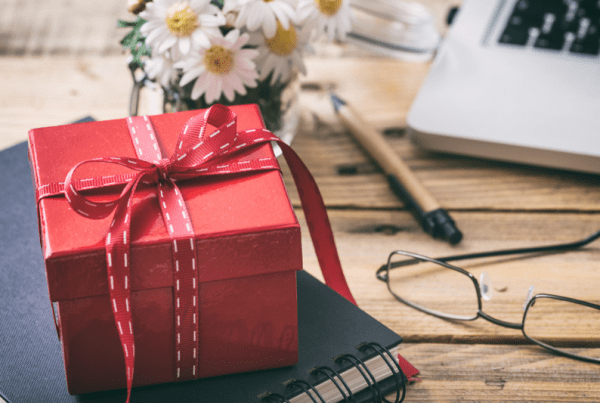According to the American Institute of Stress, 94% of workers report feeling stress at work, and nearly one-third describe their stress level as high to unusually high.
While stress is of course only one element of the mental health puzzle, this statistic paints a clear picture of a widespread issue — the need to improve employee mental health at work.
Employee mental health was an afterthought just a decade ago, but the mountain of evidence that shows how mission-critical it is for companies to function at their absolute best is nothing short of staggering.
Mental health and employee well-being affect productivity, retention, absenteeism, satisfaction, and much more.
In fact, according to Gallup, business profitability goes up an estimated 21% when employees are engaged in their work — something that is deeply linked with the overall mental state of employees.
“Nine out of 10 employees are concerned about their burnout levels.” — Pathways’ Mind at Work: A Report on Employee Mental Health
So what’s causing this corporate mental health crisis? The truth is, the mental health challenge is a myriad issue.
Feelings of isolation and disconnectedness; the struggle to find true work-life balance; the demands of adapting to new technologies and evolving job roles; interpersonal relationships — it may be a combination of all of these things.
And if your employees’ mental health is suffering it is not necessarily something that you should feel guilty about; however, there are plenty of adjustments and improvements you can implement to support your employees and make your company a workplace people want to participate in, stay in, and recruit others to join.
With a changing workforce, many managers and entrepreneurs are choosing to invest in mental health programs and services that contribute to a more positive work environment. These are some of our favorite employee health and wellness platforms to help managers provide work perks and wellness services to their team:
| WorkTango | ❤️ Claimable awards to incentivize health behaviors | Visit WorkTango |
| YuMuuv | 🧘🏻♀️ Start a team wellness challenge | Visit YuMuuv |
| Motivosity | 👨🏻💻 Turn managers into leaders with a manager development program | Visit Motivosity |
| Deel | 📊 Leverage data to develop wellness initiatives | Visit Deel |
| Bonusly | ⭐️ Create meaningful relationships via peer to peer recognition | Visit Bonusly |
| 👉 Compare more HR-vetted and approved options here | ||
Now, without further ado, let’s get into the ultimate guide outlining all the ways you can improve employee mental health at work!
Ways To Improve Employee Mental Health At Work
1 Offer mental health benefits

Courtesy of Multnomah County
Mental health benefits cover a broad spectrum of activities and steps that serve both the company and the employees who work there. These benefits help solve issues ranging from managing stress and overall well-being to finances and employee conflicts. Offering counseling and other services to your employees will combat burnout, decreased productivity, absenteeism, and any workplace toxicity.
How to implement this to support employee mental health: Set up a comprehensive employee assistance program and utilize software that can facilitate a positive work environment. There are plenty of tools for feedback, reinforcement, communication, and every aspect of the corporate mental health umbrella.
2 Build recognition into your culture
Building recognition into your company culture is paramount when it comes to supporting your employees’ mental health. Creating a positive company culture is a deliberate process that takes many steps and a ton of intentionality, which is why recognition — essentially, making your people feel seen, heard, and rewarded is everything.
How to implement this to support employee mental health: Start by making recognition part of your company’s routine. Integrate it into team meetings, host special events, and do anything it takes to make it a regular occurrence.
Recognition also has to be personalized as opposed to generic shoutouts and it’s always a good idea to encourage peer-to-peer recognition via recognition software. And of course, it never hurts to throw in something tangible like gift cards, wellness gifts, and other non-monetary rewards.
Here is a list of a few top-rated employee reward and recognition platforms:
| Motivosity | 🏆 Reward your team’s priorities, culture, and performance with premium incentives | Visit Motivosity |
| Bucketlist | 🎁 Award them an eGift | Visit Bucketlist |
| WorkTango | 🌟 Engage and retain employees with recognition, rewards, surveys, and more | Visit WorkTango |
| Bonusly | 🥇 Recognize and reward employees for their achievements and milestones | Visit Bonusly |
| Nectar | 😃 Peer-to-peer recognition, Amazon integration, boost your engagement and retention | Visit Nectar |
| 👉 Compare more HR-vetted and approved options here | ||
3 Provide an employee wellness stipend
An employee wellness fund is set up by an employer to provide financial assistance to boost the health and well-being of their employees. Normally, this type of fund can be used to cover expenses related to mental health and overall wellness such as hiring a personal trainer, getting a massage, taking CrossFit classes, or taking yoga classes.
How to implement this to support employee mental health: Determine the amount of the stipend by taking into account company size, budget, and other factors. Also, be sure to communicate the details to your employees, establish a tracking system for expenses, and have employees review and evaluate the employee wellness program consistently. If you need help getting started, there are even stipend services that can help you manage this program like Awardco.
4 Subscribe to a mental health app
A cost-effective and helpful strategy to help your employees is to subscribe your team to an employee mental health app that they can use regularly. Some employees might use this tool more than others, but these apps often provide stressed employees with an opportunity to relax, re-center themselves, and practice self-care for a few minutes a day.
There are several top-rated apps available but here are a few to get you started…
🔹 Calm
- Calm is an award-winning sleep, meditation, and mental well-being app. Its core functionalities are built around creating peace and calmness with audiovisual content, guided meditations, and mindfulness training.
- Headspace helps employees relax their minds, catch their breath, and reduce their stress. Your team will enjoy more goodnight sleeps, experience happier days, and feel better in all the moments between.
Subscribing to a mental health app is an excellent strategy for improving workplace mental health and well-being. These types of programs are specially designed to help employees think clearly, be more positive, and introspective, manage time, and in many cases, to even help them heal or at least understand their traumas.
How to implement this to support employee mental health: Downloading and subscribing to mental health apps is normally as easy as going to the App Store. However, the kicker is getting employee buy-in. The good thing is that most of these mental health aids are convenient, cost-effective, personalized, and provide complete anonymity.
5 Send out employee surveys to learn more about what is working and what is not
Similar to how heaps of studies have been coming out showing that checking in on your friends can massively boost their mental health, checking in with your employees can do the same. But how? That’s where employee surveys come in handy.
This tool is effective for finding out what’s going on while giving employees the space and comfort they need to feel safe to answer with their truth. Once you have received these insights, you and your management team can get to work making any necessary adjustments to optimize the work environment for maximum employee satisfaction.
How to implement this to support employee mental health: Utilize employee feedback software or an employee survey tool. That’s the easiest way to implement this tactic. To see how effective your chosen tool is, you should expect to see improved communication, increased engagement, enhanced productivity, and improved retention.
Making your employees’ overall wellness a priority at your company can have a positive effect on multiple levels of your business. Using a tool like monday.com can help make it easier to track your different wellness goals and initaitves to ensure they are effective year-round.
6 Provide your company with an employee engagement software
An employee engagement software is a platform that is designed to include employees and give them a hub to connect, communicate, and stay unified. These software programs ultimately add a sense of humanity back into the workplace by facilitating a community that can transcend distances, hierarchy, and other barriers that get in the way of employee engagement and well-being.
How to implement this to support employee mental health: Sign up for an employee engagement platform like Motivosity and improve communication, increase transparency, enhance collaboration, and open up more opportunities for feedback and constructive dialogue. Plus, many employee engagement solutions also have built-in features for rewards and recognition, which will go a long way because sometimes employees just need a little bit of encouragement.
Pro-Tip: Try Motivosity! This employee engagement software helps employees create real connections, build community, engage in training, facilitate meetings, reward and recognize employees, and much more.
7 Revise your PTO policy (Make sure employees are using PTO)
Revising your PTO policy and making sure employees are using their time off is one of the easiest ways to improve employee mental health. Changes to PTO policies can reduce burnout and keep employees from feeling overworked and overwhelmed. Recharging and resting properly can also help to soothe stress and give them much-needed energy to handle their job demands.
How to implement this to support employee mental health: Notify the entire team of any major changes to PTO. Consider also using employee management software and other HR solutions to simplify this task and keep your team in sync.
8 Encourage employees to practice professional development
The outdated mentality of employers wanting to keep employees in place professionally and personally has generally been replaced by a more modern approach in which employees are empowered to explore their interests even in a corporate context. Employees need to experience growth and progress, giving them a sense of purpose and fulfillment.
How to implement this to support employee mental health: Sign up for corporate wellness software that has a built-in learning management system or offers courses. Consider offering financial aid or paying for employees to attend industry events and seminars.
The bottom line? Look at employees practicing professional development as an investment instead of as an expense. It will pay off in retention, satisfaction, and just about every key metric about mental health in the workplace.
9 Managers conduct one on one meetings with employees to learn what their biggest time sucks are
This idea gives managers a sense of what things time is being spent on, if it is worthwhile, and if employees are given too much or not enough work
One-on-one meetings create a professional level of intimacy and an environment where the truth about things like how time is being used — and wasted — can be expressed and fixed. Employees then can be open about what activities are encouraging as opposed to the ones that feel ineffective, giving their manager a chance to remove those tasks, thus relieving stress or finding a way to improve the task if possible.
How to implement this to support employee mental health: To maximize these one-on-one meetings, have your managers ask for feedback, closely observe work habits, track time (on both sides), and discuss workflow and productivity. But always give plenty of reassurance so that the employees do not feel insecure about their jobs, otherwise, this potentially great way of improving mental health can actually become a detriment.
10 Talk about mental health (fight the stigma that it is not okay for the workplace)
Opening up the dialogue for employees to be able to have conversations around mental health is one of the most crucial steps you can take toward transforming your workplace into a positive environment. In doing so, you can reduce any stigmas around mental health, increase awareness, foster a supportive company culture, and generate action to solve potential mental health issues.
How to implement this to support employee mental health: Leverage HR platforms and offer free counseling via apps and even outside resources. Let your employees know that you fully support them and that their jobs are not in doubt because of mental struggles. In other words, show them that it is okay to not be okay sometimes and that they do have a safe place at work.
11 Offer mental health training to HR professionals and other employees who are interested
While nobody expects HR professionals to provide the dual function of a full-time counselor, they do play a significant role in helping employees resolve interpersonal issues and are often one of the first places they go when employees are dealing with personal challenges. That’s why offering optional mental health training to HR professionals and other employees can help them be equipped to handle situations with empathy and compassion.
How to implement this to support employee mental health: Hire experts and any outside help that you need to prepare your HR specialists and team members for the mental health challenges that arise in the workplace. Whether your employees have learning disabilities or outside-of-work issues cropping up, it makes an enormous difference when you have nurtured the internal resources needed to adapt and assist your people.
Many HR tools offer mental health training courses and other services on their platforms, so one of the easiest ways to implement this strategy and improve behavioral health in the workplace is to simply sign up for a tool of this kind. Lastly, establish procedures that let people at your company know the proper procedures for supporting others with their mental health.
12 Plan a company-wide mental health day
Company-wide mental health days can help employees in several ways, including an increase in understanding and awareness, the time needed to identify and support struggling employees, creating a culture of support, and preventing employee burnout.
How to implement this to support employee mental health: Let employees know that they can — and really should not work for 24 hours during what would normally be a work day. Take it a step further by encouraging them to have complete and utter detachment from work, including not feeling the requirement to respond to messages, emails, or any form of corporate communication.
13 Connect HR + Leadership on employee health and wellness
Getting buy-in to focus on improving mental health and well-being in the workplace starts at the top. HR and leadership make building mental health support into company culture a seamless process if they are willing to fully invest in it. Doing so helps mental health in the workplace because it prioritizes employee well-being, addresses concerns, fosters positivity, and leads to practical actions.
How to implement this to support employee mental health: Fortunately, the best way to implement this employee mental health booster is as easy as leadership and the HR pros making monthly efforts to discuss and take action on mental wellness initiatives and improvements.
14 Make work flexibility a staple of your workplace
Flexibility is one of the most desired things prospective employees look for when assessing whether or not a company is a good fit for them. Giving employees the flexibility to determine when, where, and how they get work done affords them the freedom they need to maintain a healthy lifestyle — both physically and mentally.
How to implement this to support employee mental health: Flexibility is one of the main counters to overstressing. It also increases job satisfaction and employee engagement, improves work-life balance, and even helps with recruiting efforts by turning employees into your biggest word-of-mouth advocates. The key to implementing this mental health workplace strategy is determining the right performance metrics and milestones.
How the work gets done is often less important than the completion itself and that it is done at a high level. Some employees may perform extremely well in focused work, while others need breaks between to combat stressors. Now, they can make that call for themselves.
15 Institute “no-meeting days” to encourage employees to focus and get work done without distractions

Courtesy of Someecards.com
No-meeting days are also often called “heads-down days,” but no matter what you choose to call them, these designated periods are meant to allow employees to focus on work and not to have to worry about spending extra time Zooming in and out. The key goal of no-meeting days is to reduce distractions, boost productivity and focus, and enable employees to attend to family and personal responsibilities in their spare time.
How to implement this to support employee mental health: Sign up for asynchronous work software to make it even easier for employees to work without necessarily needing to connect via meetings. With the right platform, many tasks can be coordinated and completed directly in an app or software.
People Also Ask These Questions About How To Improve Employee Mental Health
Q: What are the benefits of providing mental health benefits to your employees?
- A: The benefits of providing mental health benefits to your employees include but are not limited to improved employee well-being, increased productivity, reduced absenteeism, improved retention, and a more positive work culture.
Q: What are some easy ways to support employee mental health?
- A: Some of the easiest ways to support employee mental health are to encourage the use of PTO, offer flexible work options, provide counseling services and other mental health resources, promote work life balance, and offer training and professional development opportunities.
Q: How do you provide mental health support to employees?
- A: You can provide mental health support to employees by encouraging them to take breaks, giving recognition and rewards, allowing them to work remotely, reducing the number of mandatory meetings, and much more.


